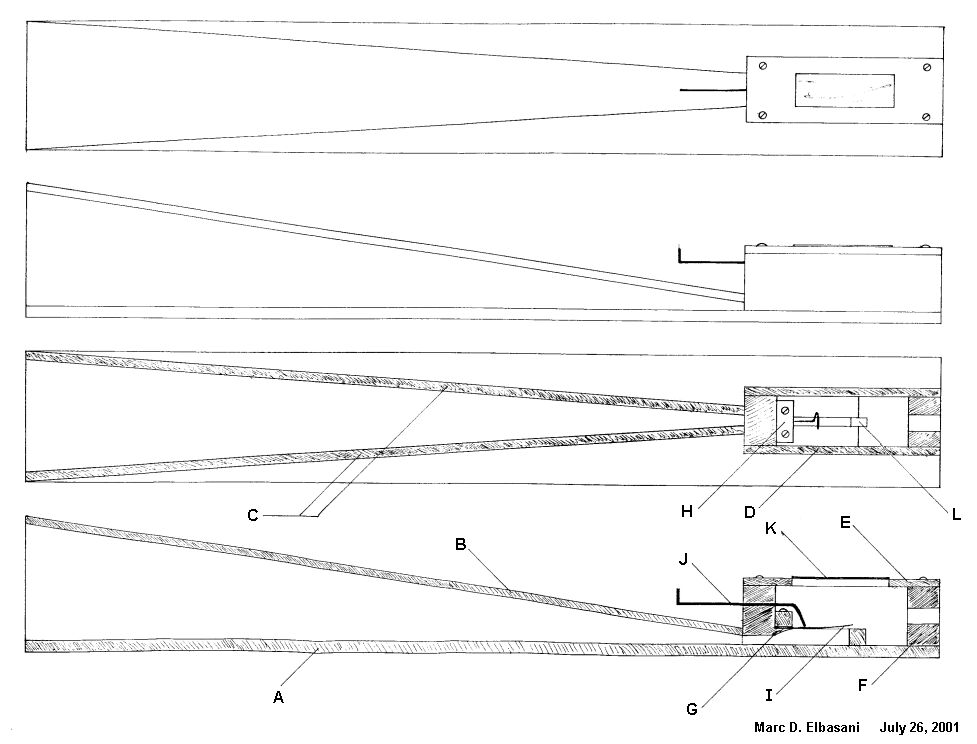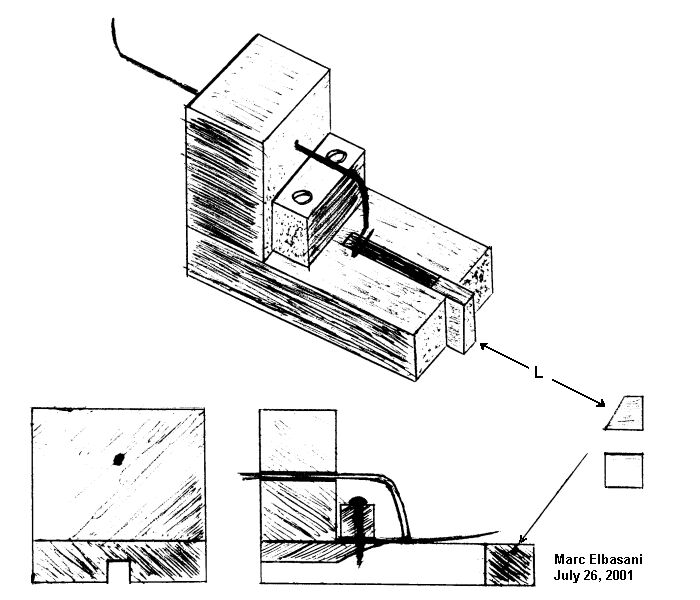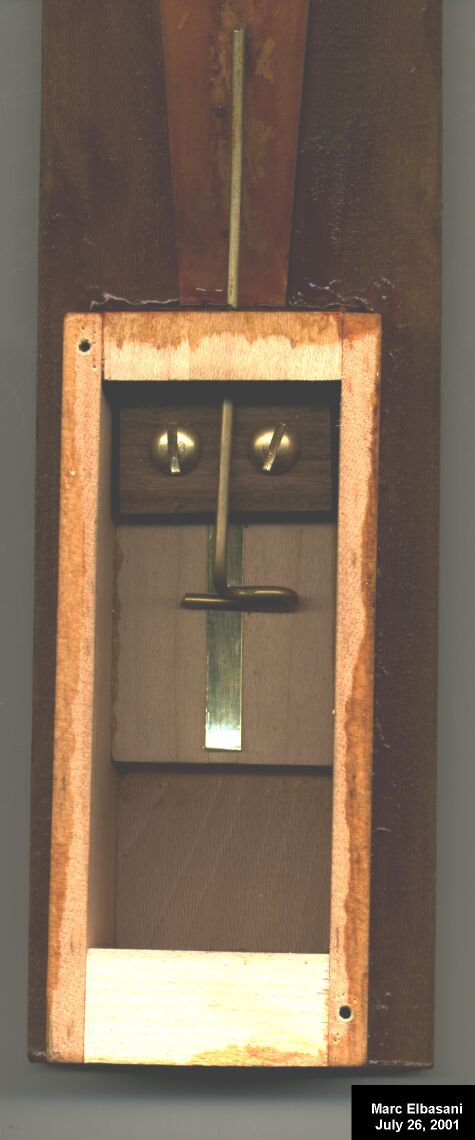| You Are Not Logged In | Login/Get New Account |
|
Please Log In. Accounts are free!
Logged In users are granted additional features including a more current version of the Archives and a simplified process for submitting articles. |
|
MMD
 Tech
Tech
 elbasaniTrumpet
elbasaniTrumpet
|
|
by Marc Elbasani I've built some reed pipes that have new features, which I feel have simplified their construction. This design could be used in making many types of pipe organ reed stops, including trumpets, trombones, oboes, clarinets, bassoons, posaunes, tubas, and saxophones. The design of the pipe is as follows: Piece 'A' is the foundation of the pipe, a board of wood running the full length of the pipe. Both the resonator (made from face piece 'B' and side walls 'C') and the boot (the box made of sides 'D' and cap 'E') are built on this foundation piece. I have found that building both the resonator and boot on this single foundation greatly simplifies the construction. All of these pieces could be made from hardwood or softwood as a tradeoff between sturdiness and weight. The toe hole block 'F' is similar to that in flue pipes, and as in flue pipes it should be made of a hardwood. The reed tongue 'I' and the tuning wire 'J' are essentially the same as in standard reed pipes. The tongue is a sheet of brass which has been sheared to proper dimensions and burnished to receive its voicing curve, and the tuning wire is a shaped piece of stiff wire (usually phosphor bronze), which controls the vibrating length of the tongue. The tongue vibrates against the shallot, which here is constructed from two pieces. The larger piece is 'G'. a thin board of hardwood that has been cut down the center to form a groove. The grooved block is passed over the table saw a second time to open the gap, but this second cut runs only about halfway down the length of the reed. The end of the open gap is closed by inserting part 'L', which can be formed so that the inner edge is slanted so as to provide the voicer with the desired tone. Block 'H', another piece of hardwood, secures the brass reed (in place of the wedge traditionally used in reed pipes). The reed is clamped in place between blocks 'G' and 'H', with block 'H' being secured to block 'G' by a pair of screws. This clamping arrangement allows one to easily position and secure the reed. Replacing the reed is also a quick and simple operation. In some reed pipes, part of the boot is a leather diaphragm, which helps to give smooth startup speech to high pressure reed pipes. Such a diaphragm can be easily incorporated into the cap of the boot box. A rectangle is cut out of cap 'E' and diaphragm 'K' can be glued or clamped to the cap. Marc Elbasani
28 July 2001 |
|
|
|
|
|
|
|
|
|
CONTACT FORM: Click HERE to write to the editor, or to post a message about Mechanical Musical Instruments to the MMD Unless otherwise noted, all opinions are those of the individual authors and may not represent those of the editors. Compilation copyright 1995-2026 by Jody Kravitz. Please read our Republication Policy before copying information from or creating links to this web site. Click HERE to contact the webmaster regarding problems with the website. |
|
|
||||||
|


